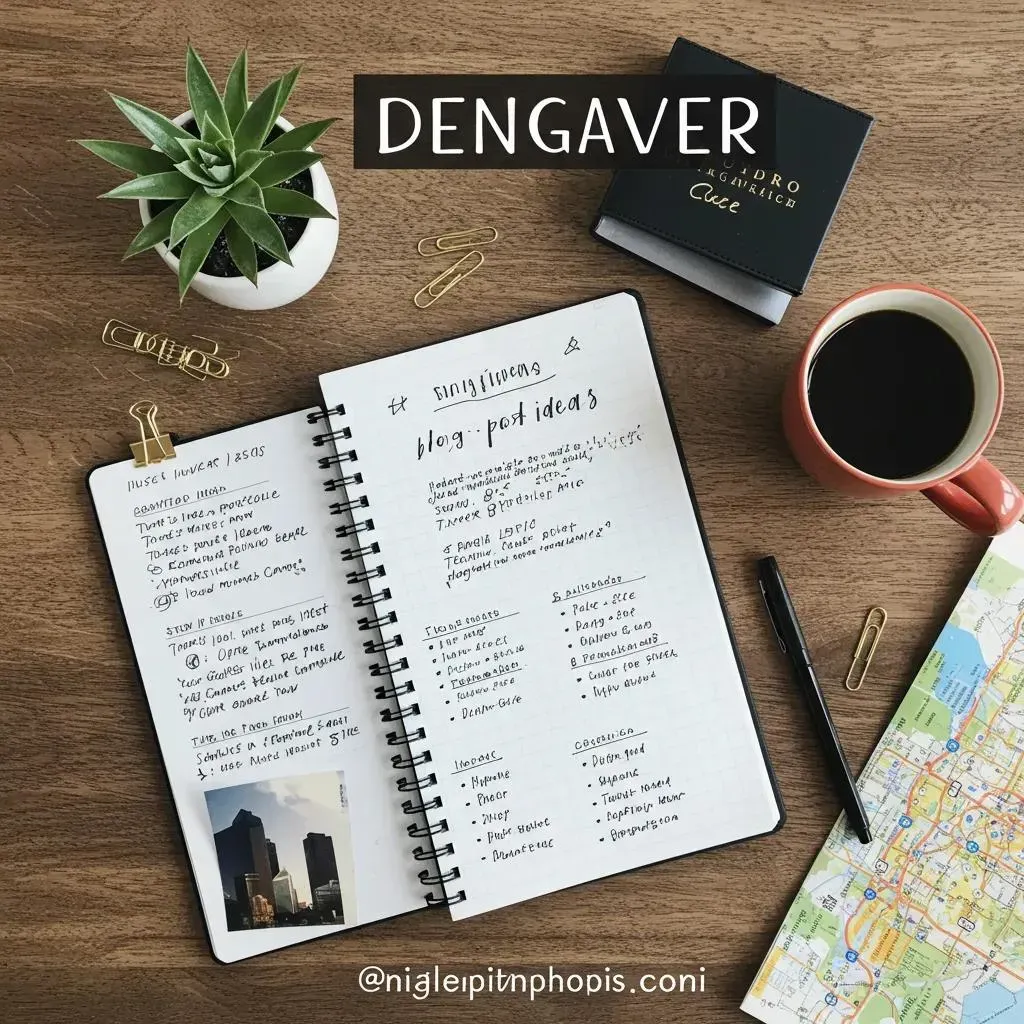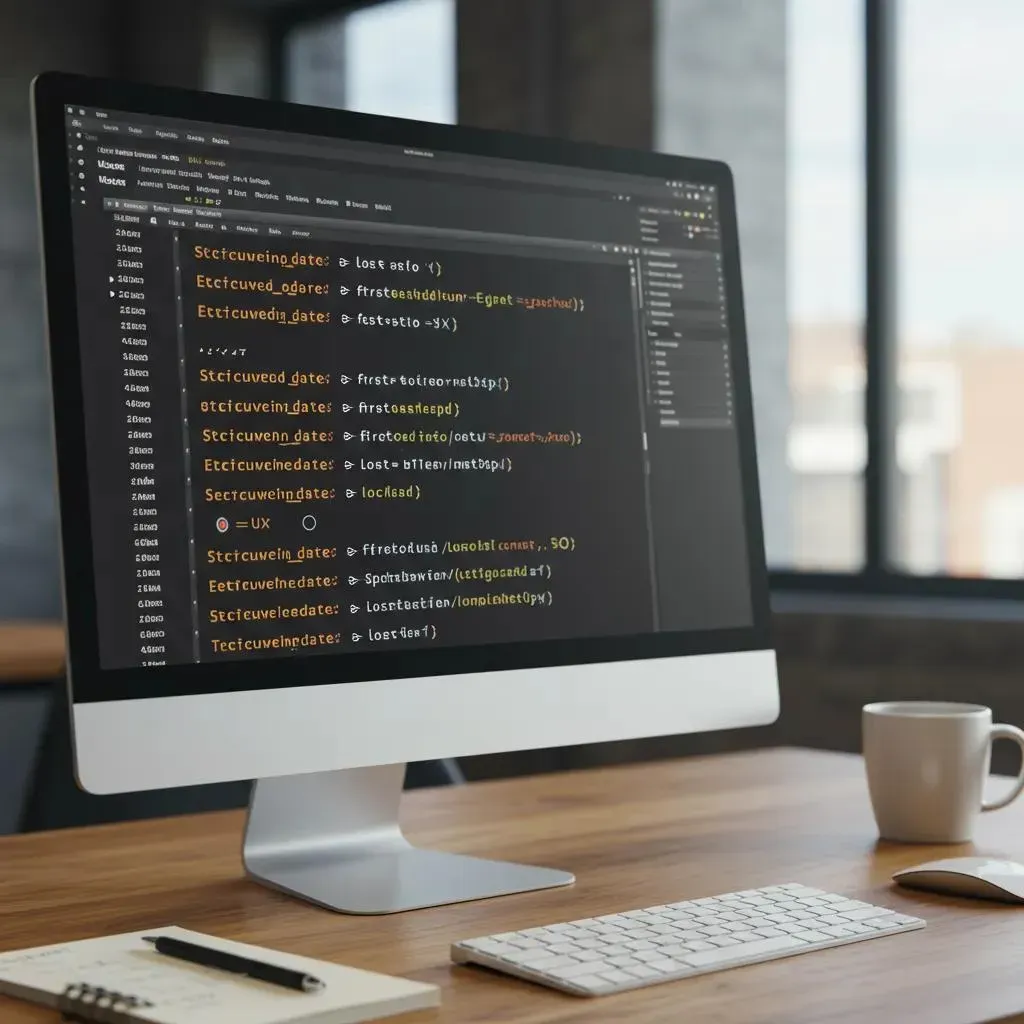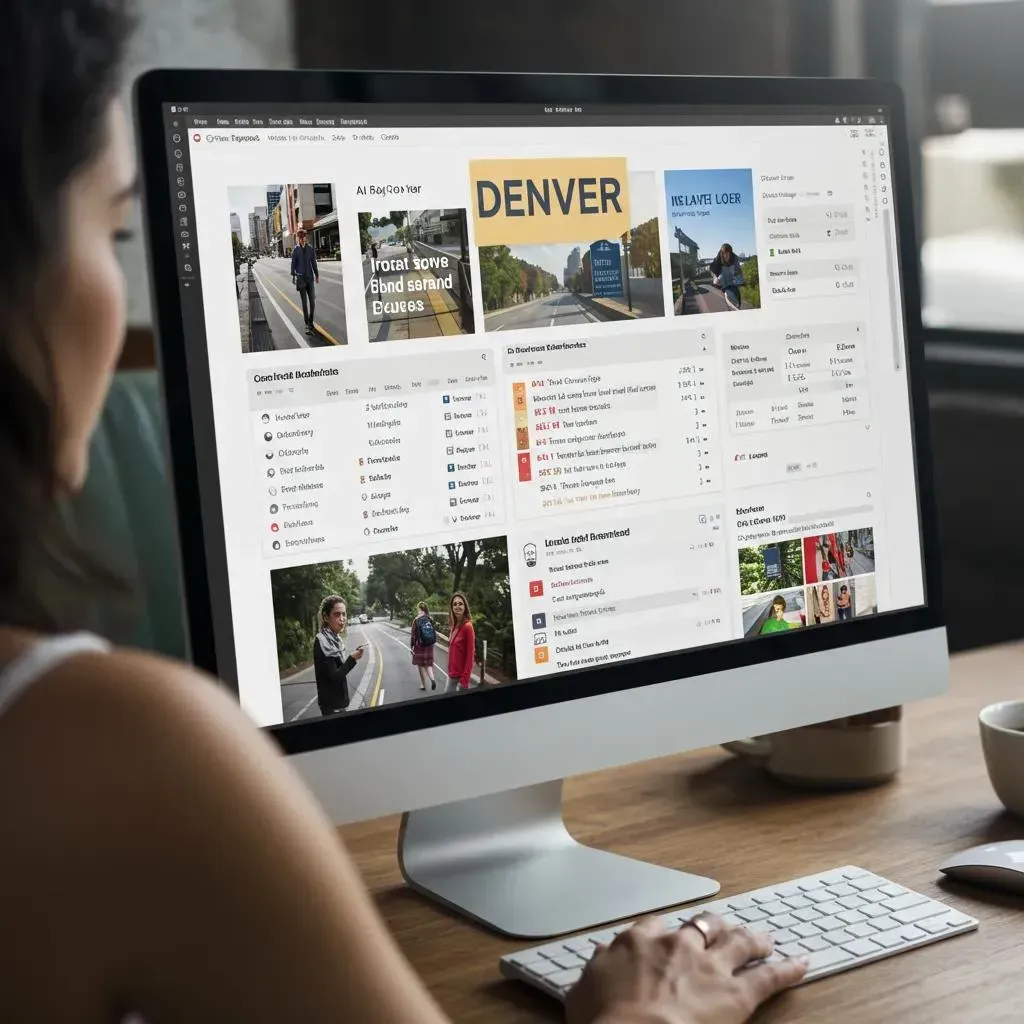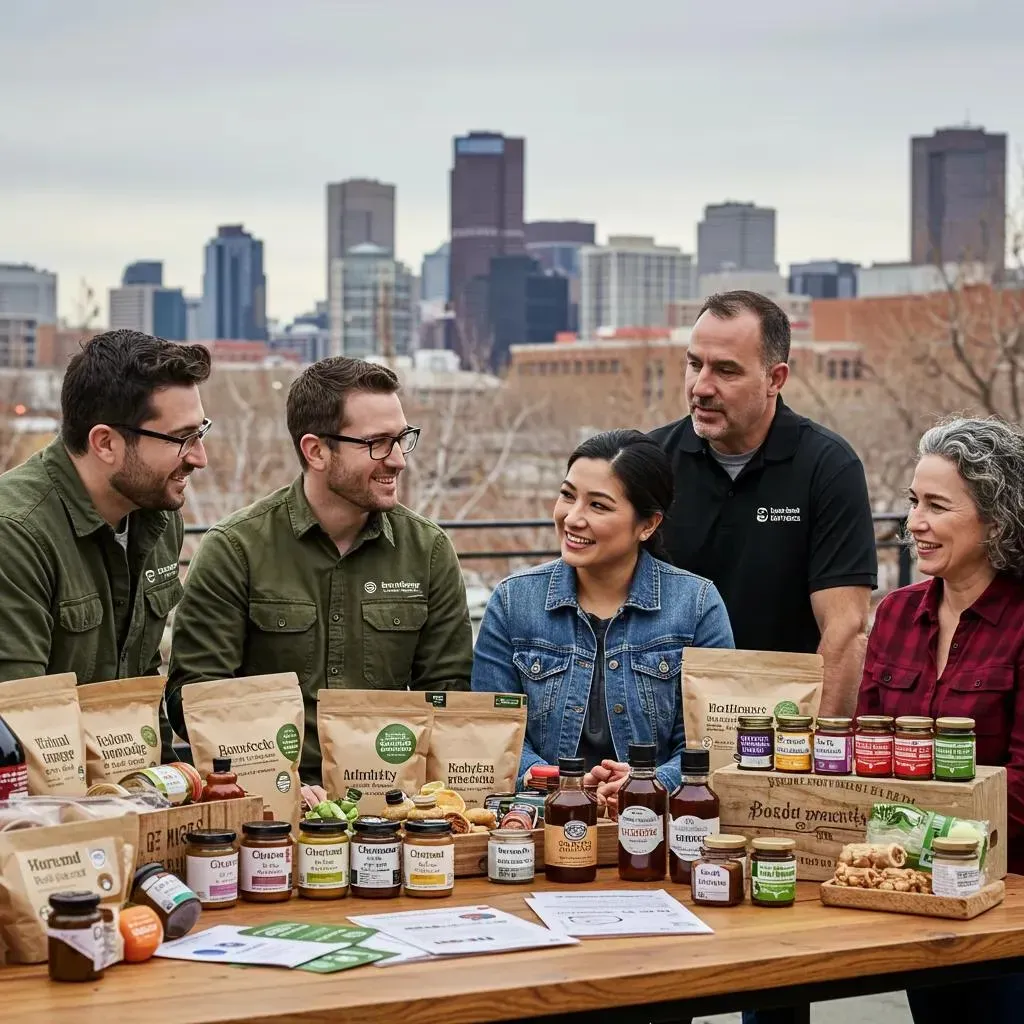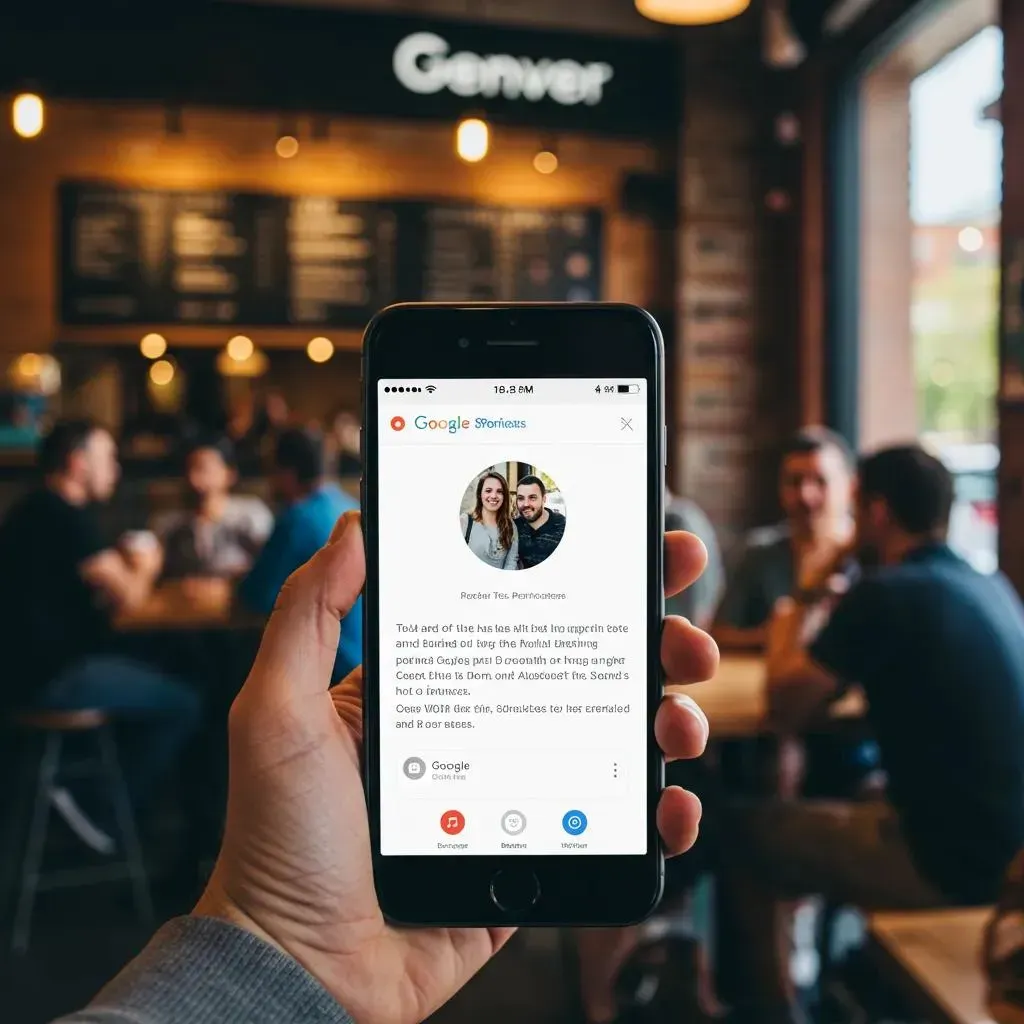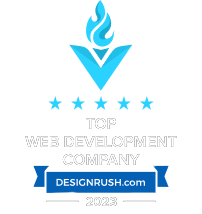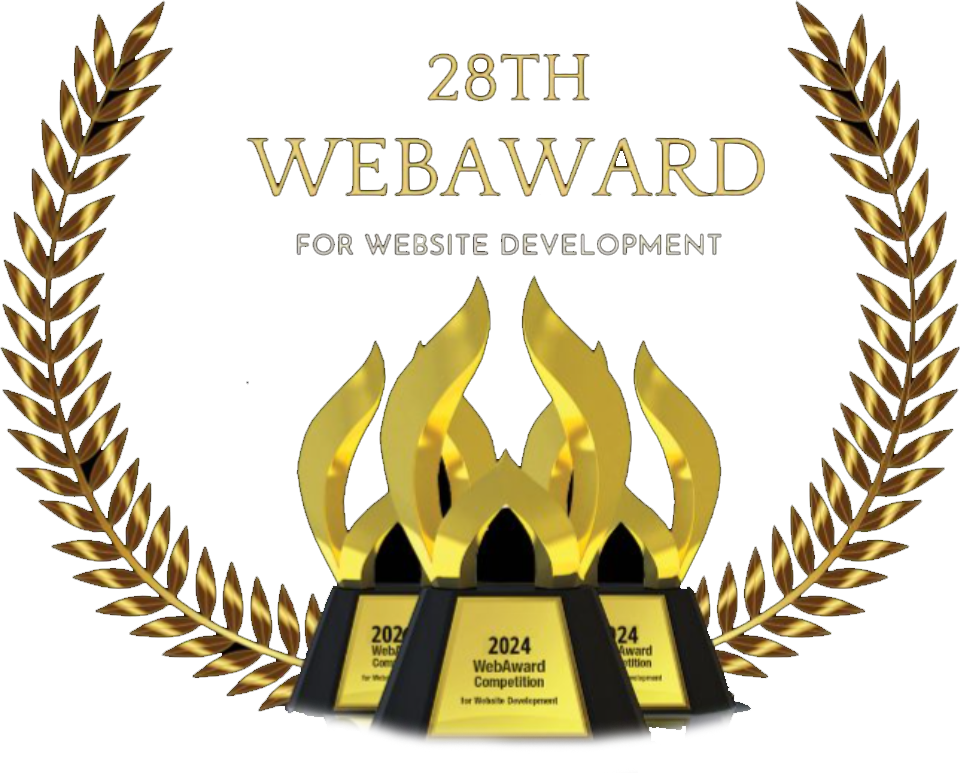Neighborhood SEO Denver 2025 Guide: LoDo to LoHi
Neighborhood SEO: How to Build High-Converting Pages for LoDo, RiNo, LoHi & More in Denver
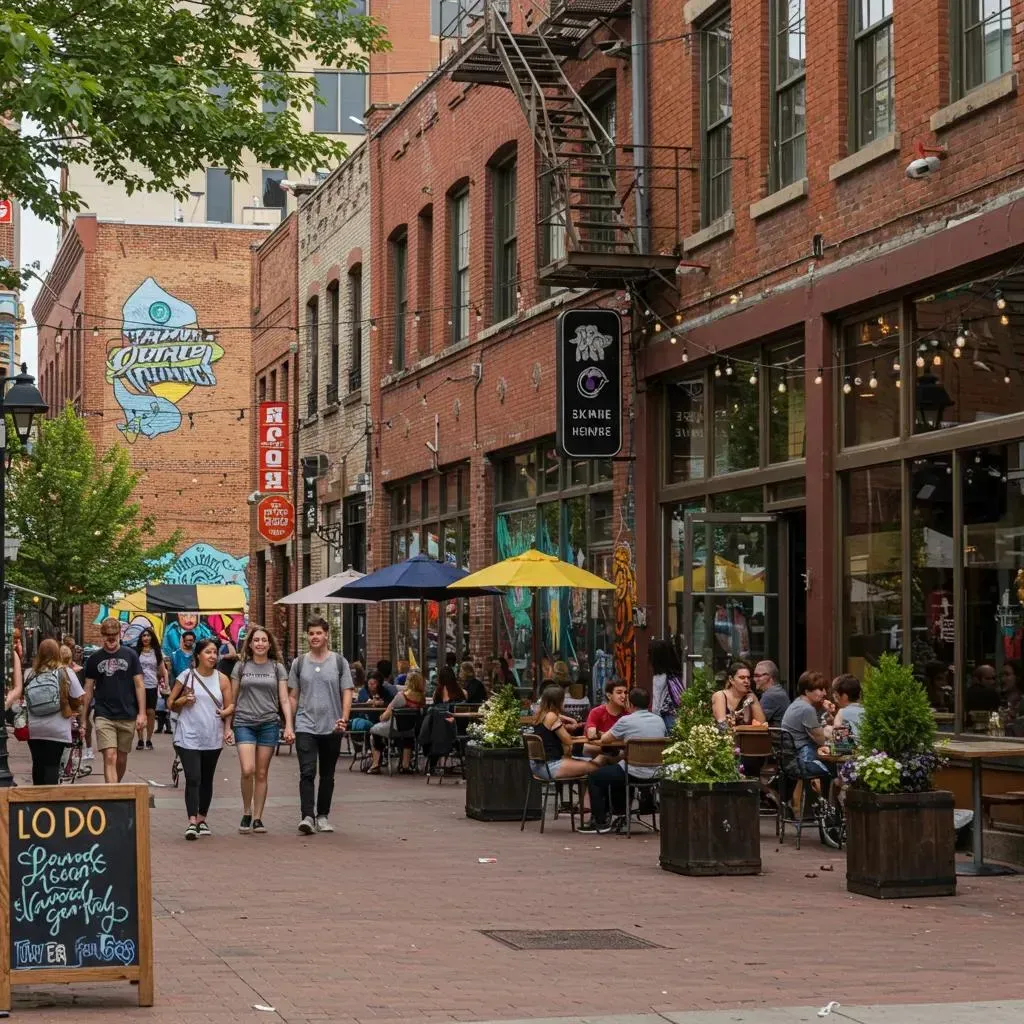
Neighborhood SEO focuses on creating focused, entity-rich landing pages and local signals that connect specific Denver neighborhoods—like LoDo, RiNo, and LoHi—to high-intent search queries, driving measurable local visibility and conversions. The approach works by aligning neighborhood-specific content, Google Business Profile signals, local schema, and internal linking to capture searches with transactional and navigational intent. This article teaches marketers and business owners how neighborhood SEO lowers friction from search to visit by using targeted keywords, GBP optimization, and conversion-focused page design. You will learn why hyperlocal targeting outperforms broad city pages, step-by-step GBP and landing-page tactics, AI-assisted production methods, internal linking blueprints, and the KPIs to track performance in 2025. The guide covers practical checklists, EAV comparison tables for page elements and GBP components, and applied lists designed to win featured snippets for local queries. Throughout, semantic strategies—entity mapping, schema recommendations, and hub-and-spoke internal linking—are prioritized so your LoDo, RiNo, or LoHi pages not only rank but convert passersby into bookings, calls, and foot traffic.
Why Is Neighborhood SEO Essential for Denver Businesses in LoDo, RiNo, and LoHi?
Neighborhood SEO is the practice of optimizing web pages and local signals to match the intent of hyperlocal searches, and it works because search engines reward geographic relevance and entity clarity when matching queries to business answers. This mechanism increases the probability that a neighborhood-targeted page appears in the Local Pack, on GBP results, and in map-driven queries, which materially lifts calls, directions, and on-site visits. For Denver businesses, neighborhood queries frequently include micro-modifiers (street names, landmarks, events), so precision in content and structured data converts searchers who are ready to act. The practical value is clear: more visible pages in LoDo, RiNo, and LoHi mean more clicks leading to reservations, purchases, and visits.
Neighborhood-specific benefits for Denver businesses include higher CTRs, better Local Pack placement, and improved mobile conversions:
- Improved Local Pack Visibility: Targeted pages increase chances of appearing for neighborhood + service queries.
- Higher Conversion Rate: Neighborhood relevance reduces friction between search intent and local action.
- Increased Foot Traffic: Clear directions, map embeds, and event tie-ins turn searches into visits.
These benefits translate into measurable KPIs—more GBP actions, higher local rankings, and increased conversions—and set up the next practical topic: immediate GBP and page actions businesses should take to capture that demand.
Lingows Media's Local SEO & Google Strategies service helps structure neighborhood programs by combining neighborhood landing pages, GBP optimization, and analytics-driven testing to improve local visibility across Denver neighborhoods. The agency's AI-powered solutions and local market expertise focus on measurable KPIs like GBP actions and local rankings, while integrating web design, automation, and analytics to scale neighborhood programs. As a Google Premier Partner and DUDA Fulfillment Power Partner, Lingows Media emphasizes a comprehensive approach that balances content quality and technical signals. To explore neighborhood-specific programs for LoDo, RiNo, or LoHi, contact Lingows Media to schedule an assessment of your current local footprint.
What Are the Benefits of Hyperlocal SEO for Denver Neighborhoods?
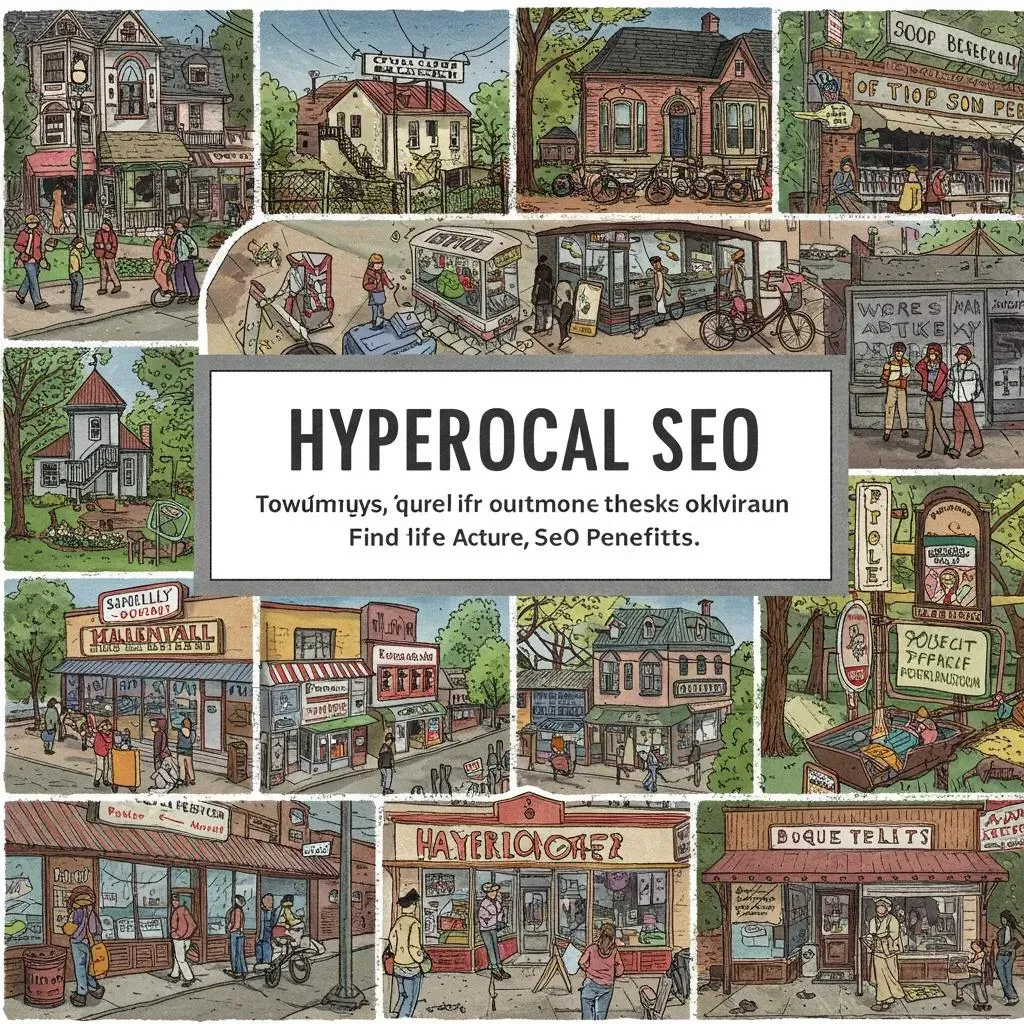
Hyperlocal SEO increases relevance by mapping content to the exact search phrases residents and visitors use, and this works because search engines match entities—neighborhood names, landmarks, and service types—directly to user intent. The result is higher visibility in the Local Pack and more GBP actions such as calls and directions, which are primary conversion signals for local businesses. For example, a LoDo restaurant page optimized with “LoDo brunch near Coors Field” captures both event-driven and local-intent searches during game days. This localized alignment shortens the path from query to conversion.
Key practical benefits include:
- Better Local SERP Features: Increased chance of capturing Local Pack and map-based results.
- Stronger Mobile Conversions: Mobile users get direct call and direction actions from optimized pages.
- Event and Landmark Leverage: Pages tied to local events and landmarks convert event-driven searchers.
Understanding these benefits leads into how those searches actually funnel customers to your door through GBP and landing pages.
How Does Local SEO Drive More Customers to LoDo, RiNo, and LoHi Businesses?
Local SEO drives customers by aligning neighborhood intent with optimized GBP entries and high-converting landing pages that reduce friction between search and action. The mechanism follows a clear pathway: query → Local Pack or organic result → neighborhood landing page/GBP → CTA (call, reservation, directions) → offline conversion. This mapping is powerful in dense neighborhoods where foot traffic and event-driven searches spike, because precise content and structured data reduce decision time for the user. Measuring GBP actions and local conversion events provides a direct line of sight into how search translates to revenue.
Practical outcomes include increased phone calls, reservation completions, and store visits from targeted queries like “RiNo brewery near Tennyson” or “LoHi boutique leather jackets.” Employing schema such as LocalBusiness and Event, plus embedding geo-tagged photos, improves both UX and indexing. The next section explains GBP optimization tactics that make these pathways consistent and measurable.
How to Optimize Google Business Profiles for Denver Neighborhood SEO Success

Optimizing a Google Business Profile (GBP) for neighborhood relevance means making the GBP an entity mirror of your neighborhood pages—complete NAP, accurate categories, neighborhood descriptors, and regular local posts—because GBP signals are among the strongest local ranking inputs for the Local Pack. The mechanism is simple: consistent, neighborhood-rich GBP content increases relevance signals and user engagement, which then influence local ranking and GBP actions. Businesses that align GBP descriptions, attributes, photos, and service-area settings to neighborhood pages see measurable increases in calls and direction requests.
Below is a concise step-by-step checklist designed to be snippet-friendly and actionable for capturing GBP-driven local demand:
- Complete NAP and Primary Category: Ensure name, address, and primary category match your website and neighborhood page context.
- Use Neighborhood Terms Naturally: Include neighborhood names and landmarks in the description and posts when relevant.
- Post Local Events and Photos: Publish neighborhood event posts and geo-tagged photos weekly to boost engagement signals.
- Enable Relevant Attributes and Services: Turn on attributes (e.g., outdoor seating, bike parking) and list neighborhood-specific services.
- Manage Reviews and Q&A: Promptly respond to reviews and answer GBP questions with neighborhood-specific details.
Implementing these steps increases GBP calls and directions by improving both relevance and trust, and it naturally prepares the GBP to feed into neighborhood landing pages.
Lingows Media helps clients optimize GBP by auditing current listings, aligning categories and attributes to neighborhood pages, creating neighborhood-tailored posts and photos, and establishing review-management workflows that sustain engagement. The agency’s Local SEO & Google Strategies approach measures GBP insights and iterates content and attributes based on calls, clicks, and direction metrics. This applied GBP process is designed to boost Local Pack placement and GBP actions for LoDo, RiNo, and LoHi businesses.
What Are the Best Practices for Google Business Profile Optimization in LoDo and RiNo?
Best practices for GBP optimization in dense zones such as LoDo and RiNo require neighborhood context in every user-facing element, because local signals like photos and event posts inform both users and search algorithms about your relevance. Start with category accuracy and ensure the description mentions neighborhood keywords where natural, then supplement with weekly posts tied to local events or promotions. Geo-tagged photography of storefronts, menus, or neighborhood landmarks supports recognition and user trust while event schema on your site complements GBP event posts.
A practical mini-checklist includes:
- Category and Description Alignment: Use precise categories and weave neighborhood descriptors naturally into the GBP description.
- Geo-Tagged Photos Weekly: Add new photos that show the storefront and neighborhood context to increase engagement.
- Event Posting and Q&A Management: Post neighborhood events and answer questions with local detail to improve CTR and trust.
These practices increase engagement metrics in GBP insights and support higher Local Pack relevance for neighborhood queries.
How Do Google Business Profiles Impact Local Search Rankings in Denver?
Google Business Profiles impact local search by providing engagement and relevance signals—such as photo views, post interactions, and review velocity—that feed ranking algorithms for the Local Pack and maps. The mechanism works through behavioral signals (users clicking for directions or calling) and content completeness, both of which tell Google your business is the best local match for neighborhood queries. When GBP and neighborhood pages are consistent and frequently updated, the combined signals create a stronger entity representation in Google’s local index.
Expected improvements after GBP optimization commonly include increased visibility in the Local Pack, more GBP actions (calls, direction requests), and better performance for queries that include neighborhood names or nearby landmarks. Monitoring GBP insights and iterating on posts and attributes provides a continuous feedback loop that improves local ranking performance over time.
- Categories
- Optimization tactic: Use precise primary and secondary categories that align with neighborhood-specific services.
- Expected ranking / UX benefit: Higher Local Pack relevance for targeted service-related searches.
- Photos & Posts
- Optimization tactic: Add geo-tagged photos and share neighborhood event posts on a weekly basis.
- Expected ranking / UX benefit: Increased Google Business Profile engagement and higher click-through rates from search results.
- Attributes & Services
- Optimization tactic: Enable neighborhood-relevant attributes (e.g., outdoor seating, pet-friendly) and list all offered services in detail.
- Expected ranking / UX benefit: Improved match for user intent, leading to higher conversions and visibility in local search.
This quick-reference matrix links GBP actions to expected benefits, making it easier to prioritize GBP tasks that most directly affect local visibility and user actions.
What Are the Key SEO Strategies to Build High-Converting Neighborhood Pages?
Neighborhood landing pages convert when they combine neighborhood-specific intent signals with clear conversion paths: a compelling local value proposition, entity-rich content, visible CTAs, and structured data for LocalBusiness and Event. The mechanism is semantic: pages that map keywords to entities (neighborhood, landmark, service) communicate relevance to search engines and deliver clarity to users, which reduces friction to conversion. High-converting layouts show the offer above the fold, include a GBP snapshot and map, and surface review snippets near CTAs.
The following checklist captures essential on-page elements to include for every Denver neighborhood landing page:
- Headline with Neighborhood + Offer: Lead with a clear value proposition that includes the neighborhood name and core service.
- Local Proof: Display GBP summary, reviews, and images tied to local landmarks or events.
- Conversion-Focused CTAs: Use primary CTAs like “Reserve Table,” “Book Service,” or “Get Directions” placed prominently.
- Schema & Fast Mobile Layout: Implement LocalBusiness schema, Event schema when relevant, and ensure mobile speed.
Below is a comparison table showing how specific landing page elements map to conversion impact across typical neighborhood pages.
- Primary CTA (Reserve / Call / Directions)
- Purpose: Reduce friction and guide users toward immediate action.
- Conversion impact: High — drives direct engagement such as bookings, calls, or visits.
- GBP Snapshot & Reviews
- Purpose: Build trust and provide local social proof through authentic feedback.
- Conversion impact: High — strengthens credibility and increases user confidence to convert.
- Embedded Map & Directions
- Purpose: Help users quickly plan their visit or navigate to your location.
- Conversion impact: Medium–High — improves accessibility and boosts in-person visits.
- Local Events & Promotions
- Purpose: Capture and convert traffic tied to time-sensitive or community events.
- Conversion impact: Medium — attracts new audiences and encourages local participation.
This EAV-style table clarifies priorities: CTAs, local proof, and maps yield the most direct conversion lift for LoDo restaurants, RiNo breweries, and LoHi retailers.
Service highlight — Neighborhood landing page builds: Lingows Media builds neighborhood landing pages that combine AI-assisted keyword research, structured LocalBusiness schema, and CRO-driven layouts to maximize conversions for Denver neighborhoods. The service includes automated keyword clustering to find high-intent neighborhood queries, locally focused content templates that reference landmarks and events, and layered CTAs optimized for mobile foot-traffic behaviors. This neighborhood landing page program pairs analytics-driven experimentation with hands-on CRO tactics to raise booking and direction completion rates. The approach complements GBP optimization and internal linking to create measurable improvements in GBP actions and local rankings.
How to Conduct Neighborhood-Specific Keyword Research for LoDo, RiNo, and LoHi?
Neighborhood keyword research identifies phrases that combine service intent with neighborhood modifiers, and it works by mining GBP queries, search console data, and conversational prompts to uncover what users ask in context. Start with seed keywords that pair service + neighborhood, then expand with event, landmark, and directional modifiers to capture micro-intent. Clustering these keywords by intent (informational, navigational, transactional) enables mapping to page sections—hero, services, FAQs, and events.
Practical steps include using GBP query reports, Google Search Console location segments, and local rank tracking to validate keyword volumes and intent. Cluster terms into groups that become page headings and schema descriptions, which helps pages match both classic and voice-driven searches.
How to Create High-Converting Landing Pages Tailored to Denver Neighborhoods?
A high-converting neighborhood landing page leads with a local value prop, uses neighborhood imagery, and makes conversion paths explicit through primary CTAs and short forms, because users searching locally expect immediate, frictionless options. Structure pages with a clear H1 that includes the neighborhood, a GBP snapshot, social proof near CTAs, and a map embed to guide directions. Use LocalBusiness and Event schema, compress images for speed, and prioritize mobile-first rendering so the CTA is visible on small screens.
Testing headline variants, CTA text, and review placement with A/B experiments improves conversion rates over time. Mapping keyword clusters to specific page sections also ensures search relevance and improves engagement metrics that feed back into ranking.
What Elements Make Landing Pages Effective for LoDo Restaurants and Retail?
Effective neighborhood pages for restaurants and retail include reservation or buy CTAs, menu or product highlights, hours and directions, and event tie-ins, because these elements align with immediate visit or purchase intent. Prominent reservation buttons or click-to-call features reduce steps between search and table or store visit, while menu highlights or best-sellers orient users quickly. Photo galleries showing interior and neighborhood context improve trust and compel in-person visits.
Implement menu and product schema where allowed, highlight neighborhood promos, and surface reviews near CTAs to boost both ranking signals and conversion trust. These CRO elements are especially valuable in dense areas with high foot traffic and frequent event-driven demand.
How to Leverage Local Reviews and Testimonials to Boost Conversions?
Local reviews and testimonials act as immediate social proof and influence both algorithmic trust signals and user decisions, because search engines and users weigh recent, local reviews heavily for relevance. Implement a workflow to request reviews at key post-purchase touchpoints, embed curated testimonials near primary CTAs, and mark up reviews with aggregated review schema where policies permit. Responding to reviews promptly demonstrates responsiveness and improves perceived service quality.
Embed short testimonial snippets beside booking or direction CTAs to lower hesitation, and use sentiment analysis to identify the most persuasive quotes for each neighborhood page. These tactics convert more visitors into customers while also improving GBP engagement metrics.
| Element | Attribute | Value |
|---|---|---|
| LoDo landing page | Primary CTA | Reserve table / Call / Directions |
| RiNo brewery page | Local proof | Taproom photos, event schedule, 4–5 star reviews |
| LoHi boutique | Trust signal | Testimonials, product schema, local influencer mentions |
This EAV table helps prioritize page elements by neighborhood type and expected conversion value.
The purpose of local SEO optimization for retailers is to enhance Google visibility and drive organic traffic growth.
Local SEO Optimization for Retailers: Google Visibility and Traffic Growth
The Purpose of the presented research is to substantiate the importance of the local optimization of the retailer’s business for search engines to increase organic traffic; to represent insights and give practical recommendations for retailers regarding local optimization of their business in Google as part of an effective marketing strategy; to create the typical valid data micromarking (by the example of the Ukrainian retailer), which will contribute to an advantageous placement in the Local Pack in comparison with competitors, and increase organic traffic and conversion.
How Can AI-Powered Tools Enhance Neighborhood SEO for Denver Businesses?
AI-powered tools enhance neighborhood SEO by scaling keyword discovery, generating topical content variants, and extracting local entities—landmarks, street names, and events—because automated semantic extraction maps content to entities that search engines recognize. The mechanism increases keyword coverage and time-to-publish while maintaining local authenticity when human oversight is applied. AI also supports iterative optimization through on-page scoring and performance-driven title/meta suggestions that lift CTR and relevance.
Below are concrete AI techniques and how they translate to measurable SEO benefits:
- Semantic Clustering: Groups neighborhood keywords and intent, improving coverage and reducing cannibalization.
- Entity Extraction: Pulls landmarks and local vocabulary into content templates, increasing local relevance.
- On-page Scoring & Automation: Suggests meta and H1 variants to increase CTR and streamline updates.
These AI techniques reduce production time and improve local intent matching, but they require editorial oversight to preserve hyperlocal voice and accuracy.
Semantic Clustering
- Use case: Expands neighborhood-specific keyword sets by grouping semantically related terms.
- SEO benefit / metric improved: Broader keyword coverage and reduced keyword cannibalization, leading to stronger topical authority.
Entity Extraction
- Use case: Automates insertion of local landmarks, events, and entities into content for better contextual relevance.
- SEO benefit / metric improved: Higher local relevance and stronger Local Pack ranking signals through entity-rich optimization.
On-Page Optimization Automation
- Use case: Generates title and meta description suggestions at scale based on content and intent.
- SEO benefit / metric improved: Faster optimization cycles and measurable CTR uplift from more compelling, intent-aligned metadata.
What AI Techniques Improve Keyword Targeting and Content Optimization?
AI techniques that improve keyword targeting include semantic clustering, conversational prompt simulation for voice queries, and automated intent tagging, because these methods identify diverse neighborhood phrasing and prioritize high-intent clusters. Entity extraction tools automatically surface local landmarks and event names to enrich content, while on-page scoring tools recommend title and meta variations to increase click-through rates. Human editors should validate AI outputs to ensure local authenticity and correct landmark references.
A combined AI + human workflow shortens time-to-publish and increases the number of optimized neighborhood pages without sacrificing accuracy, improving both indexation speed and relevance for local queries.
Are There Case Studies Showing AI Impact on LoDo and RiNo SEO Performance?
While full case studies are best published separately, anonymized examples show AI-driven workflows shortening content cycles and improving local KPIs by measurable amounts: faster page production, higher GBP actions, and improved local rankings. One example template shows how semantic clustering plus entity enrichment led to a lift in GBP calls and a rise into the Local Pack for multiple neighborhood queries within weeks. These templates highlight the importance of combining AI with local knowledge and a testing plan to validate improvements.
Presenting results as before/after KPI snapshots—local ranking positions, GBP calls/directions, and conversion rate lift—helps quantify the business impact and guides iterative scaling.
How to Build and Maintain a Strong Internal Linking Structure for Denver Neighborhood SEO?
A hub-and-spoke architecture centralizes topical authority on a neighborhood hub page and distributes relevance to spoke pages through descriptive, entity-rich anchor text, because internal links pass topical signals and clarify site structure to search engines. The mechanism channels contextual relevance from broader neighborhood hubs to individual service pages, improving indexing and topical authority for neighborhood queries. Well-structured internal links also support user navigation, allowing visitors to move from a neighborhood overview to specific services or event pages with minimal friction.
Core linking patterns to implement include explicit hub pages for each neighborhood that link to service spokes, contextual links from relevant blog posts to neighborhood pages, and consistent use of entity-attribute anchor phrasing. Monitoring internal click flows and adjusting anchor placements maintains link equity distribution and supports fresh indexing of updated content.
Why Is Hub-and-Spoke Linking Important for LoDo, RiNo, and LoHi SEO Pages?
Hub-and-spoke linking builds topical authority by aggregating neighborhood signals on a hub page and distributing that authority to specialized spokes, because search engines use link structure to understand content hierarchy and relationships. This structure improves discoverability and ensures neighborhood pages are discoverable from broader site contexts. For example, a LoDo hub that links to restaurant, retail, and events spokes helps search engines associate those services with the LoDo entity.
Practical benefits include improved indexing, clearer content hierarchy for search crawlers, and better user navigation—each contributing to higher engagement and reduced bounce rates for neighborhood queries.
How to Use Entity-Rich Anchor Text to Boost Local SEO Authority?
Entity-rich anchors should combine neighborhood and service descriptors—like "LoDo restaurant SEO services" or "RiNo brewery taproom hours"—because descriptive anchors clarify the relationship between pages and the entities they describe. Avoid exact-match over-optimization by varying anchor phrases naturally and ensuring context supports the anchor. Map anchor usage to an internal linking policy that prioritizes hubs linking to spokes and cross-linking from topical articles to neighborhood pages.
Implement a quarterly link audit to identify orphaned pages and rebalance internal links, ensuring that core neighborhood pages maintain sufficient internal equity to rank for targeted local queries.
What Are the Most Common Questions About Neighborhood SEO in Denver?
Businesses commonly ask about cost, effectiveness in 2025, and how to measure neighborhood SEO success, because these concerns determine resource allocation and expected ROI. Neighborhood SEO requires ongoing management—GBP upkeep, content updates, review workflows, and analytics—to deliver sustained local visibility and conversions. Below we address typical buyer questions and provide practical guidance for next steps.
Common pricing and service model considerations often determine engagement scope; an audit-first approach is recommended to estimate effort and KPIs.
Does Local SEO Still Work in 2025 for Denver Neighborhoods?
Yes—local SEO remains effective in 2025 when executed with current best practices, because mobile and voice-driven local intent remains strong and search engines continue to prioritize relevance and entity clarity for local results. Recent trends show sustained usage of neighborhood queries, higher reliance on GBP actions, and growing influence of entity-based signals in local rankings. Ongoing activity—regular GBP posts, reviews, content updates, and schema use—keeps pages relevant for both traditional and AI-mediated local searches.
Staying current with entity-rich content and performance measurement ensures neighborhood SEO remains a high-ROI channel for local businesses.
How Can Denver Businesses Track the Success of Their Neighborhood SEO Efforts?
Track neighborhood SEO success using a blend of GBP insights, local rank tracking, and conversion metrics because these measures map directly from search visibility to user actions. Essential KPIs include Local Pack rankings, GBP calls/direction requests, organic traffic segmented by geo, and conversions from neighborhood landing pages. Tools to use include Google Search Console, the Google Business Profile dashboard, and specialized local rank trackers and reporting platforms.
Establish a regular reporting cadence—monthly for initial optimization, then quarterly for strategic adjustments—and use A/B testing on landing pages to iterate toward higher conversion rates.
Lingows Media offers Local SEO & Google Strategies consultations to audit GBP signals, design neighborhood landing pages, and set up measurement frameworks that report on GBP actions, local rankings, and conversion outcomes. If you want a tailored plan for LoDo, RiNo, LoHi, or other Denver neighborhoods, contact Lingows Media to schedule a consultation and receive an audit-based roadmap that prioritizes high-impact local actions.
Frequently Asked Questions
What is the role of local schema in neighborhood SEO?
Local schema markup plays a crucial role in neighborhood SEO by providing search engines with structured data about your business, including its location, services, and offerings. This structured information helps search engines understand the context of your content, improving the chances of appearing in local search results. By implementing local schema, businesses can enhance their visibility in the Local Pack and improve click-through rates, as search engines can display rich snippets that attract user attention.
How can businesses leverage local events for SEO?
Leveraging local events for SEO involves creating content that ties your business to community happenings, such as festivals, markets, or sports events. By optimizing your website and Google Business Profile with event-related keywords and information, you can attract searchers looking for activities in your area. Additionally, posting about these events on social media and your website can increase engagement and drive traffic, as users often search for local events before making plans, thus enhancing your local relevance.
What are the best ways to manage online reviews for local SEO?
Managing online reviews effectively is essential for local SEO as they influence both user trust and search rankings. Encourage satisfied customers to leave positive reviews on your Google Business Profile and other platforms. Respond promptly to all reviews, whether positive or negative, to show engagement and care for customer feedback. Regularly monitoring reviews helps you identify trends and areas for improvement, while also enhancing your business's reputation, which can lead to increased visibility in local search results.
How does mobile optimization impact neighborhood SEO?
Mobile optimization is critical for neighborhood SEO because a significant portion of local searches occurs on mobile devices. Ensuring your website is mobile-friendly improves user experience, leading to lower bounce rates and higher engagement. Features like fast loading times, easy navigation, and clear calls-to-action are essential for converting mobile users. Additionally, Google prioritizes mobile-optimized sites in search rankings, so investing in mobile responsiveness can enhance your visibility in local search results and attract more foot traffic.
What metrics should businesses track to measure neighborhood SEO success?
To measure neighborhood SEO success, businesses should track key performance indicators (KPIs) such as Local Pack rankings, Google Business Profile actions (calls, direction requests), organic traffic from local searches, and conversion rates from neighborhood landing pages. Tools like Google Analytics and Google Search Console can provide insights into user behavior and traffic sources. Regularly reviewing these metrics helps businesses understand the effectiveness of their SEO strategies and make data-driven adjustments to improve local visibility and engagement.
How can businesses stay updated on local SEO trends?
Staying updated on local SEO trends involves following industry blogs, attending webinars, and participating in local SEO forums. Subscribing to newsletters from reputable SEO sources can provide insights into algorithm changes and best practices. Additionally, networking with other local businesses and SEO professionals can offer valuable perspectives on effective strategies. Engaging with local SEO communities on social media platforms can also help businesses share experiences and learn from others' successes and challenges in the ever-evolving landscape of local search.
Conclusion
Implementing neighborhood SEO strategies can significantly enhance local visibility and drive conversions for businesses in Denver's vibrant areas like LoDo, RiNo, and LoHi. By optimizing Google Business Profiles and creating targeted landing pages, businesses can effectively connect with their community and meet the specific needs of local searchers. The value of this approach lies in its ability to transform search intent into tangible actions, such as calls and visits. To elevate your local presence, consider reaching out to Lingows Media for a tailored strategy that maximizes your neighborhood's potential.

